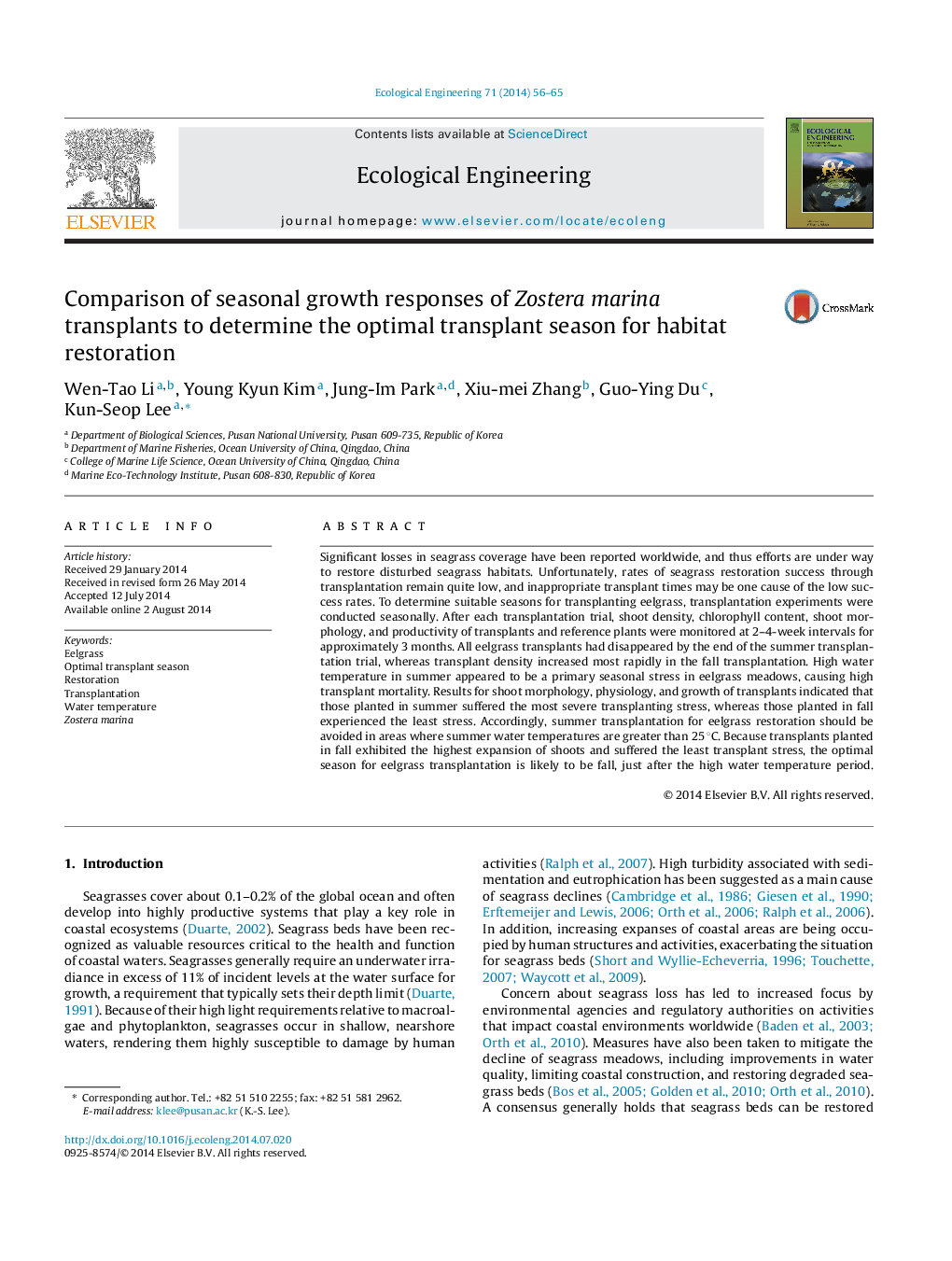| Article ID | Journal | Published Year | Pages | File Type |
|---|---|---|---|---|
| 4389137 | Ecological Engineering | 2014 | 10 Pages |
Abstract
Significant losses in seagrass coverage have been reported worldwide, and thus efforts are under way to restore disturbed seagrass habitats. Unfortunately, rates of seagrass restoration success through transplantation remain quite low, and inappropriate transplant times may be one cause of the low success rates. To determine suitable seasons for transplanting eelgrass, transplantation experiments were conducted seasonally. After each transplantation trial, shoot density, chlorophyll content, shoot morphology, and productivity of transplants and reference plants were monitored at 2-4-week intervals for approximately 3 months. All eelgrass transplants had disappeared by the end of the summer transplantation trial, whereas transplant density increased most rapidly in the fall transplantation. High water temperature in summer appeared to be a primary seasonal stress in eelgrass meadows, causing high transplant mortality. Results for shoot morphology, physiology, and growth of transplants indicated that those planted in summer suffered the most severe transplanting stress, whereas those planted in fall experienced the least stress. Accordingly, summer transplantation for eelgrass restoration should be avoided in areas where summer water temperatures are greater than 25 °C. Because transplants planted in fall exhibited the highest expansion of shoots and suffered the least transplant stress, the optimal season for eelgrass transplantation is likely to be fall, just after the high water temperature period.
Related Topics
Life Sciences
Agricultural and Biological Sciences
Ecology, Evolution, Behavior and Systematics
Authors
Wen-Tao Li, Young Kyun Kim, Jung-Im Park, Xiu-mei Zhang, Guo-Ying Du, Kun-Seop Lee,
